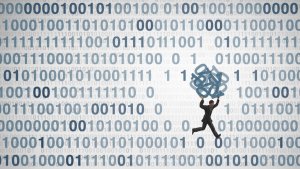Big Data is changing everything. Here's how your business can harness its power to drive performance and deliver better outcomes.
How Companies Use Big Data To Deliver Extraordinary Results
Big Data is changing everything. Here's how your business can harness its power to drive performance and deliver better outcomes.

We are witnessing a movement that will completely transform any part of business and society. The word we have given to this movement is Big Data and it will change everything, from the way banks and shops operate to the way we treat cancer and protect our world from terrorism.
No matter what job you are in and no matter what industry you work in, Big Data will transform it.
Some people believe that Big Data is just a big fad that will go away if they ignore it for long enough. It won’t! The hype around Big Data and the name may disappear (which wouldn’t be a great loss), but the phenomenon will stay and only gather momentum.
What we call Big Data today will simply become the new normal in a few years’ time, when all businesses and government organizations use large volumes of data to improve what they do and how they do it.
What Is Big Data?
Big Data basically refers to the fact that we can now collect and analyse data in ways that was simply impossible even a few years ago. There are two things that are fuelling this Big Data movement: the fact we have more data on anything and our improved ability to store and analyse any data.
More Data On Everything
Everything we do in our increasingly digitised world leaves a data trail. This means the amount of data available is literally exploding. We have created more data in the past two years than in the entire previous history of mankind.
This data is coming not just from the tens of millions of messages and emails we send each other every second via email, WhatsApp, Facebook, Twitter, etc. but also from the one trillion digital photos we take each year and the increasing amounts of video data we generate (every single minute we currently upload about 300 hours of new video to YouTube and we share almost three million videos on Facebook).
On top of that, we have data from all the sensors we are now surrounded by. The latest smartphones have sensors to tell where we are (GPS), how fast we are moving (Accelerometer), what the weather is like around us (barometer), what force we are using to press the touch screen (touch sensor) and much more.
By 2020, we will have over six billion smartphones in the world – all full of sensors that collect data. But not only our phones are getting smart, we now have smart TVs, smart watches, smart meters, smart kettles, fridges, tennis rackets and even smart light bulbs.
In fact, by 2020, we will have over 50 billion devices that are connected to the Internet. All this means that the amount of data and the variety of data (from sensor data, to text and video) in the world will grow to unimaginable levels.
Ability To Analyse Everything
All this Big Data is worth very little unless we are able to turn it into insights. In order to do that we need to capture and analyse the data.
In the past, there were limitations to the amount of data that could be stored in databases – the more data there was, the slower the system became. This can now be overcome with new techniques that allow us to store and analyse data across different databases, in distributed locations, connected via networks.
So-called distributed computing means huge amounts of data can be stored (in little bits across lots of databases) and analysed by sharing the analysis between different servers (each performing a small part of the analysis).
What’s more, Big Data storage and analysis technology is now available to rent in a software-as-a-service (SAAS) model, which makes Big Data analytics accessible to anyone, even those with low budgets and limited IT support.
We are seeing amazing advancements in the way we can analyse data. Algorithms can now look at photos, identify who is on them and then search the Internet for other pictures of that person.
Algorithms can now understand spoken words, translate them into written text and analyse this text for content, meaning and sentiment (e.g. are we saying nice things or not-so-nice things?). More and more advanced algorithms emerge every day to help us understand our world and predict the future.
Couple all this with machine learning and artificial intelligence (the ability of algorithms to learn and make decisions independently) and you can hopefully see that the developments and opportunities here are very exciting and evolving very quickly.
Moving forward
In my new book Big Data in Practice, I showcase how Big Data is used today, across lots of different industries, among big and small companies, to deliver real value.
I demonstrate how retailers use Big Data to predict trends and consumer behaviours, how governments are using Big Data to foil terrorist plots, even how a tiny family butcher or a zoo use Big Data to improve performance, as well as the use of Big Data in cities, telecoms, sports, gambling, fashion, manufacturing, research, motor racing, video gaming and everything in between.
The next few years will see companies who ignore Big Data be overtaken by those who don’t. I very much believe that any organization without a Big Data strategy and without plans in place to start using Big Data to improve performance will be left behind.
My biggest piece of advice would be to start with your strategy in order to identify the big challenges and areas in which data will make the biggest difference. Only then collect and analyse the data that will help you meet those challenges. Don’t fall into the trap of collecting and analysing everything you can and nothing that matters.
Bernard Marr is a bestselling business author, keynote speaker and consultant in Big Data analytics and enterprise performance. His latest book Big Data in Practice is published by Wiley.
Thanks for signing up to Minutehack alerts.
Brilliant editorials heading your way soon.
Okay, Thanks!




